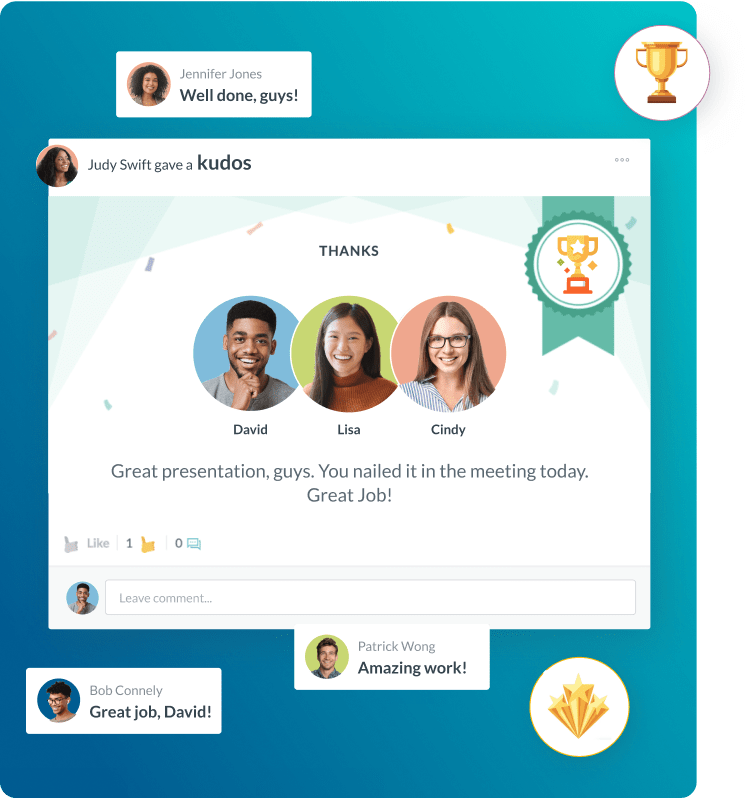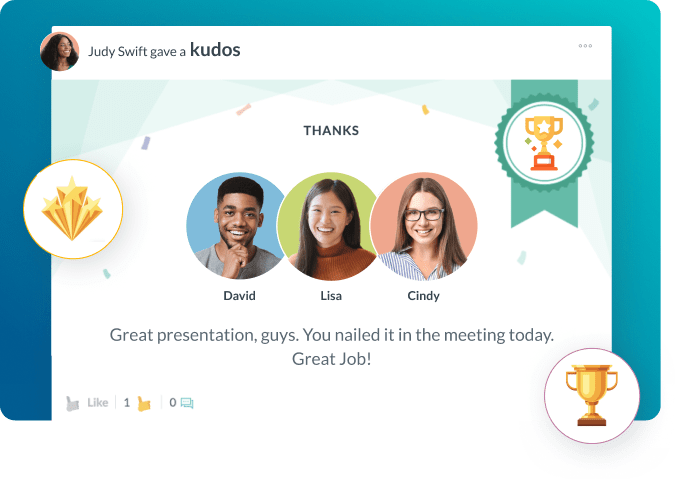HR ATS: Applicant Tracking System
- Why an ATS Matters for Your Business
- Key Takeaways for Evaluating Applicant Tracking System Software
- Value Comparison: ATS vs. Manual Recruitment Methods
- Actionable Best Practices for Maximizing Your ATS ROI
- Common Pitfalls to Avoid with Your Recruitment ATS
- Industry Applications of the Applicant Tracking System
- A Step-by-Step Implementation Plan for a New ATS
- Future Outlook and Emerging Trends in ATS Technology
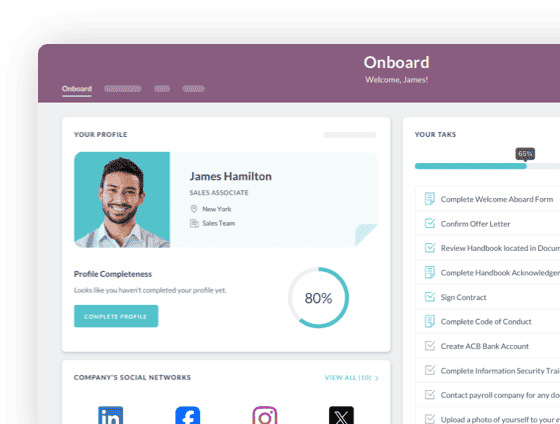
 Cut onboarding time
by 60%—here's the
Ultimate Checklist
that helped do it.
Cut onboarding time
by 60%—here's the
Ultimate Checklist
that helped do it.
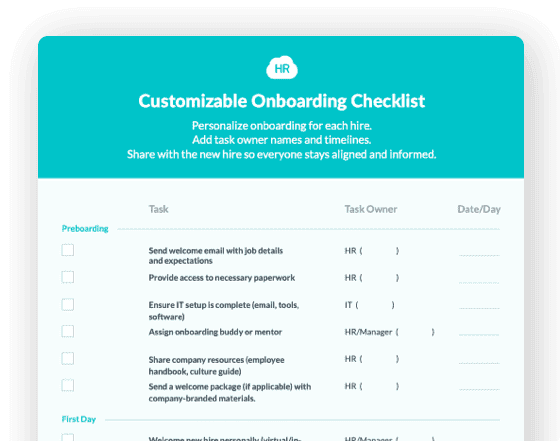
HR ATS: Applicant Tracking System Defined for Business Leaders
An Applicant Tracking System (ATS) is a special software application. It is for Human Resources (HR). The ATS manages and simplifies the entire hiring process. This goes from posting a job to the final hire. Business leaders must understand the ATS. It directly affects how a company finds and hires top people. The job market is tough today. Using technology to gain a hiring edge is no longer optional. It is a strategic need. A good ATS acts as the central digital hub for all hiring work. It moves candidates through the hiring process quickly. It cuts down on paperwork for HR staff and hiring managers. This lets them focus on high-value tasks like interviewing and selection.
Why an ATS Matters for Your Business
Implementing or updating an ATS is important for your business. It means better efficiency, compliance, and quality of hire. Without an ATS, hiring often becomes slow and confusing. It leads to mistakes and a bad candidate experience. It also causes you to miss hiring goals. An ATS puts all candidate data in one place. It handles regular emails automatically. It also makes sure hiring rules are applied the same way every time. This saves time and money. It also lowers legal risks from unfair hiring. This digital change to the hiring process helps a business grow. It lets the business scale its recruitment easily and well.
Key Takeaways for Evaluating Applicant Tracking System Software
Business leaders should look at core features and return on investment (ROI) when judging ATS solutions. The right system can greatly improve a company’s talent strategy. Choosing the best HR software means looking beyond simple resume storage. Look for features that lead to key results, such as better sourcing and good data analysis.
Sourcing Efficiency
An ATS helps recruiters. It automatically posts job openings to many job boards at once. It also posts to social media and the company careers page. This greatly reduces manual work for job distribution. The platform connects with various recruiting tools. This helps widen the talent pool.
Candidate Experience
A modern ATS offers a smooth application process. It is mobile-friendly. Automated emails about application status keep candidates informed. This is key to keeping a good employer brand. It also helps top applicants stay interested. Many companies offer a robust employee self-service portal as part of their HR technology stack. This improves the overall interaction from day one, as described in this guide to onboarding best practices.
Compliance and Reporting
The system automatically tracks every candidate action and decision. This creates a record you can check. This record is necessary to prove you follow Equal Employment Opportunity (EEO) laws and other rules. It also gives strong data tools. These tools measure key hiring goals (KPIs). Examples are time-to-hire and cost-per-hire.
Integration with Core HR
The best systems connect easily with existing Human Resources Information Systems (HRIS). Once a person is hired, their data moves automatically to the core HR platform. This makes the new hire onboarding process easier. It removes the need for typing the same data again. This linked approach is vital for a single Human Capital Management (HCM) strategy. You can read more about this in this resource on integrated HR solutions.
Scalability
A cloud-based ATS can grow with your business. It handles many applications during fast growth. It does this without needing large infrastructure spending. This growth ability is a basic feature of a reliable HR system. This lets businesses meet hiring needs. They keep a high standard of consistency, as outlined in this article about the importance of HR software solutions.
Value Comparison: ATS vs. Manual Recruitment Methods
The choice to buy an ATS is clear when you compare it to old, manual methods. Spreadsheets and email can work for very small companies that hire rarely. But they quickly slow down the process as the company grows.
|
Feature |
Applicant Tracking System (ATS) |
Manual/Traditional Methods (Email/Spreadsheets) |
|
Candidate Sourcing |
Posts automatically to many channels, manages talent pools, includes hiring CRM tools. |
Manual posting one by one, limited reach, depends on word-of-mouth. |
|
Resume Screening |
AI-powered keyword matching and scoring, bulk actions, standardized scoring. |
Takes a long time to review manually, high risk of bias, can miss qualified people. |
|
Communication |
Sends automatic status updates, bulk email templates, keeps a central history of messages. |
Sends individual emails, high chance of missed follow-ups and confusing messages. |
|
Compliance & Reporting |
Captures data automatically, provides EEO/OFCCP report templates, gives audit-ready data. |
Requires logging data by hand, hard to create reports, high risk of breaking rules. |
|
Hiring Manager Collaboration |
Shares digital candidate files, allows feedback within the system, uses standard interview guides. |
Uses email chains, lost attachments, scattered feedback, no central record of scores. |
For businesses that want a strong team, the data power of an ATS gives a clear edge.
Actionable Best Practices for Maximizing Your ATS ROI
Just buying an ATS is not enough. You get its true value through smart setup and regular use. Business leaders must enforce best practices. This ensures the system delivers on its promise of efficiency and better hires. A key part of this success is making sure your internal processes match what the system can do.
Standardize and Automate Workflows
Map out your perfect hiring process. Then set up the ATS to follow it exactly. Use automatic triggers to move candidates between stages. For example, move them from “Interviewed” to “Offer Extended.” Send standard rejection or invitation emails automatically. This consistency saves time. It also gives a better, faster experience for every applicant. For instance, make sure your HR forms are digitized within the system.
Train for Data Quality
Treat the data in your hiring software as a critical business asset. Require all recruiters and hiring managers to follow the same rules for data entry. Bad data leads to wrong reports on metrics like time-to-fill. It hurts future efforts to find talent from your candidate database. Clear rules on HR data security should be part of the training.
Optimize for Mobile and Search
Make sure your application process works perfectly on mobile phones. Many candidates search and apply on mobile devices. A bad experience here can make good applicants drop out. Also, write job descriptions with keywords. These keywords help search engines and the ATS resume tools. They help find the best fit candidates. This concept is sometimes called ATS optimization. A deep look at your applicant tracking processes ensures you get the key hires you need.
Regularly Audit and Refine Metrics
Do not just use the default reports. Work with HR leaders to define the most important metrics for your business. These include quality of hire, source of hire, and diversity numbers. Review these reports often. Look for slowdowns and poor sourcing channels. For example, if the time-to-hire for engineering roles is much higher than average, the process needs review. Understanding these metrics is a smart move, as highlighted in this analysis of human capital management.
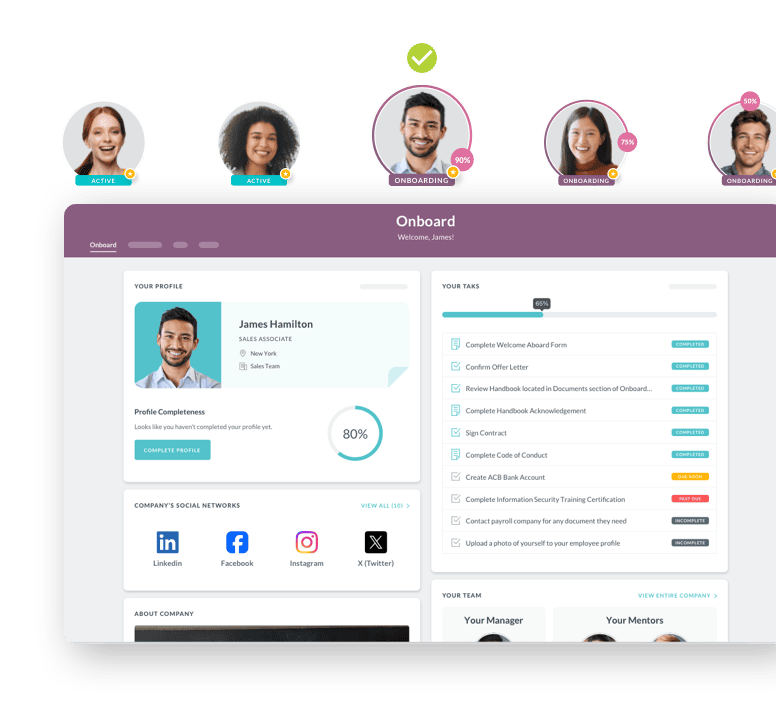
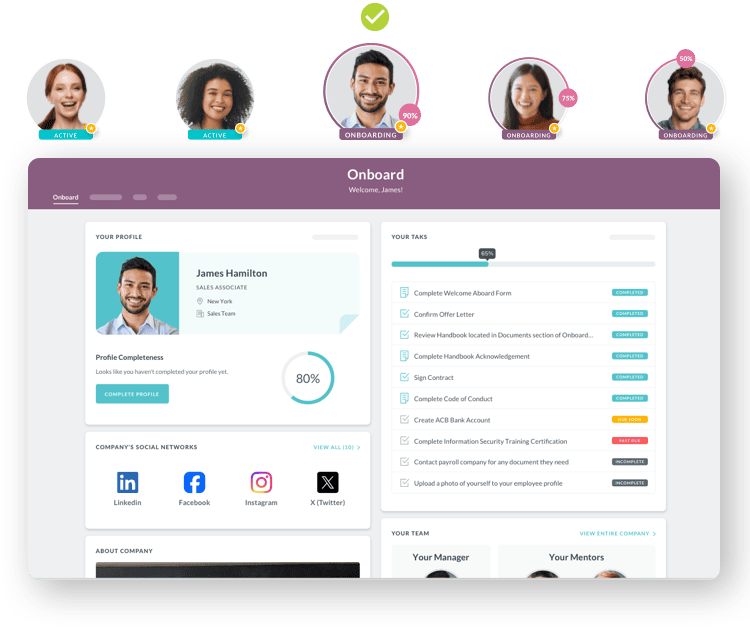
Common Pitfalls to Avoid with Your Recruitment ATS
An ATS offers great benefits. However, bad use or poor setup can hurt its value. It can even create new problems. Business leaders must know these common mistakes. This ensures a successful investment in HR technology.
Over-reliance on Keyword Filtering
Treating the ATS as only an automatic filter is a mistake. This can cause the system to screen out great candidates who use different words on their resumes. This is why applications sometimes seem to disappear into a "black hole." Recruiters should use keyword filters to narrow the pool. They should not use them to make the final decision.
Neglecting the Candidate Experience
Focusing only on internal efficiency is costly if you ignore the applicant’s journey. If the application process is too long, broken, or has poor communication, top candidates will leave. They will also share their bad experience. This can harm your company’s hiring brand. Research shows that a positive candidate experience strongly links to a company's ability to hire top talent, according to Talent Board.
Failing to Integrate with Existing Systems
A separate ATS that does not connect with your HRIS, payroll, or other HR tools creates data problems. It forces staff to type data again when a person is hired. This defeats the goal of an automated system. Make sure you choose a system that makes seamless HR system integration a priority. Companies often have trouble with disconnected systems. Finding a full HR solution is key to success.
Ignoring User Adoption
A powerful ATS is useless if staff find it too hard to use. If they go back to old methods, the system fails. Lack of proper training and a failure to require system use leads to bad processes and wrong reports. The leadership team must support the system. They must hold users accountable for using the tool correctly. The Society for Human Resource Management (SHRM) offers many guides on managing organizational change when bringing in new technology.
Poor Job Description Writing
Using vague job titles and descriptions in the ATS harms your results. It hurts searchability and candidate quality. Clear, short, and keyword-rich job descriptions are vital. They help the system match the right people. They also help candidates understand the job's real scope and skills needed.
Industry Applications of the Applicant Tracking System
ATS technology helps every industry. But how it is used changes based on how many people you hire and the type of jobs. Here are a few examples that show how the system can adapt:
Retail and Hospitality
These sectors hire many people quickly and have high staff turnover. They mainly use the ATS to process huge numbers of applications fast. It screens for basic needs automatically. Examples are availability and basic work history. It also helps set up group interviews or hiring events. The focus is on speed and throughput. This ensures stores and locations have enough staff. This keeps customer service high. The speed gained by managing a large talent pipeline is key to the daily success of these businesses, as detailed in reports on workforce management.
Technology and Software
In this industry, the focus is on specialized sourcing, not volume. The ATS platform manages a smaller, specific group of candidates. It often connects deeply with sourcing tools like LinkedIn Recruiter. Its main job is managing complex, multi-stage technical interviews. It tracks passive candidates. It also handles complex offer letters, including stock options and agreements. The reports track time-to-hire for niche jobs. This can be a key business advantage. External resources like Forbes often cover strategies for securing high-skill talent.
Healthcare
In healthcare, following rules and checking credentials are most important. The hiring system must check candidate fit. It must also track when licenses, certifications, and training expire. The system ensures only verified candidates move forward. This greatly lowers regulatory risk. The audit trail feature is essential for showing you follow strict government standards. Also, managing complex schedules and different employment types needs a very organized HR software system.
A Step-by-Step Implementation Plan for a New ATS
Bringing in a new ATS needs careful planning. This minimizes problems and ensures staff use the tool. A structured plan leads to a smooth shift from old ways to the new system.
Phase 1: Discovery and Selection (Weeks 1–4)
Define Needs: Set clear business goals. For example, "cut time-to-hire by 15%."
Assess Problems: Write down current problems in the hiring process. Decide on must-have features. Examples are mobile application, HRIS connection, and compliance reports.
Vendor Check: Make a short list of vendors. Watch detailed demos. Focus on how easy the system is to use. Make sure it meets your defined needs. Select the best fit based on features, support, and total cost. This step includes checking if the vendor can support your long-term HR strategy.
Phase 2: Configuration and Integration (Weeks 5–12)
System Setup: Work with the vendor. Set up the system to match your final hiring workflows. Create templates for job postings, emails, and interview scorecards.
Data Migration: Make a plan to move old candidate and job data. Clean the data before moving it. This ensures good quality in the new system.
System Integration: Connect the new system to your core HRIS and other systems. Examples are payroll and background check vendors. Test these connections very carefully.
Phase 3: Training and Rollout (Weeks 13–16)
User Training: Train HR staff, recruiters, and hiring managers based on their roles. Teach them how to use the software. More importantly, teach them why the new process is better for them. Use real hiring situations.
Pilot Launch: Start with a small group. Test the system in a live setting. Find and fix any unexpected issues or process gaps.
Full Launch: Start using the system company-wide. Clearly tell all users about the change. Give easy-to-reach support after the launch.
Phase 4: Optimization and Review (Ongoing)
KPI Review: After 90 days, run reports. Measure performance against the first goals. Check time-to-hire and candidate conversion rates.
Gather Feedback: Get feedback from staff on how easy the system is to use and how well it works.
Process Refinement: Change workflows, templates, and training as needed. Use the performance data and user feedback. Checking and improving all the time is key to getting the full value of your ATS. Businesses should see their HR technology as something that always gets better.
Future Outlook and Emerging Trends in ATS Technology
The ATS is quickly changing. It is becoming more than just a place to store resumes. The future of hiring technology will have more automation. It will use data more cleverly. It will focus on making the human connection better in the hiring process. Business leaders should be ready to invest in these new features. This helps them keep a competitive edge in finding talent. The shift is moving from just tracking applications to actively building relationships with future candidates. This is why resources on Talent Acquisition are growing in importance.
The next ATS platforms will rely heavily on Artificial Intelligence (AI) and Machine Learning (ML). This technology screens people ethically. It helps lower human bias. It ensures fair checks of candidates based on skills and potential alone. AI will not only filter. It will also help write better job descriptions. It will guess which channels will bring the best candidates. It can even predict future talent needs based on business strategy. Another trend is putting video interviewing right into the ATS software. This makes the first screening phase smoother. This will be an important step for HR solutions.
Another big trend is adding Recruitment Marketing (RM) features into the ATS. This means treating candidates like customers. You use personalized, automated campaigns to keep leads warm in a talent pool. This changes the process from reactive to proactive. It changes how companies think about building a pipeline. The future ATS is becoming a full Talent Relationship Management (TRM) system. Staying compliant and giving a positive candidate experience will remain key. This is true in the fast-changing world of HR technology, as discussed in publications that explore the intersection of HR and technology. The future is clear. The HR ATS will be a strategic, smart, and fully connected part of the business. It will drive hiring decisions with much greater accuracy.
Keep Reading
The Hidden Metrics of Frontline Success: Beyond Engagement Scores
"What gets measured gets managed, but what gets measured well gets transformed." — Peter
Embracing Diversity: Recognizing Different Cultures in the Workplace
Workplaces today reflect the incredible diversity of the world around us. People bring
From Manual to Automated: A Complete Guide to Digitizing Employee Onboarding for Large Organizations
Sarah Chen, Director of HR at a 7,000-employee healthcare organization, starts her Monday
Ready to streamline your onboarding process?
Book a demo today and see how HR Cloud can help you create an exceptional experience for your new employees.






